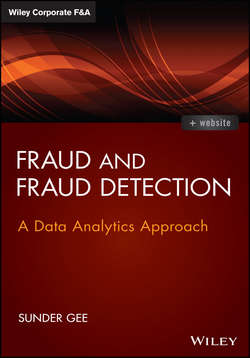Читать книгу Fraud and Fraud Detection - Gee Sunder - Страница 13
На сайте Литреса книга снята с продажи.
CHAPTER 2
Fraud Detection
FRAUDULENT DATA INCLUSIONS AND DELETIONS
ОглавлениеMany staff members have access to business systems as part of their duties to update, create, delete, and modify transaction records. Some employees, such as managers, owners, and shareholders, may have additional or higher access rights. Without the proper controls these accesses are vulnerable to errors and potential fraud.
The modification or substitution recording of the proper transaction can be classified as a fraudulent inclusion. Falling under a fraudulent deletion can be failing to record the transaction when it should be entered.
Concealing theft of inventory can be done by altering inventory records to match the physical count. Alternatively, if the fraudster is involved in the physical count, changing the count numbers to match the perpetual inventory records would also conceal the shrinkage. Reclassifying the missing inventory as obsolete would accomplish the same results. More sophisticated fraudsters may create a sale of the inventory to an old existing account that may be due for write-off.
Recharacterizing expenses as capital expenditures increases net income that may constitute financial statement fraud. One of the simplest ways to show higher income is to just omit the recording of liabilities and expenses until another period. While it is easy for management to do, it is hard for the auditors to detect as it leaves no audit trail. Improper recording can be examined but it is far more difficult to look for something that should exist but does not.
True deletion of electronic records is akin to the shredding of paper documents. Most business systems do not allow deletion without it being logged in the audit-trail file. Some systems record a deletion as a reversal of a previous transaction, therefore maintaining the integrity of the system. An excellent example of transaction deletions are “zappers and phantom-ware facilitate the systematic skimming of cash receipts by deleting records of cash sales, re-numbering receipts to disguise the deletion, and the production of conforming financial reports. In some cases, these programs can be so thorough that they reach out beyond the ECR and the sale system itself to bring inventory and employee time records into line with the deletions.”18
18
Richard Ainsworth, “Zappers & Phantom-Ware: A Global Demand for Tax Fraud Technology,” accessed November 20, 2013, http://taxblog.com/rainsworth/zappers-phantom-ware-a-global-demand-for-tax-fraud-technology.
